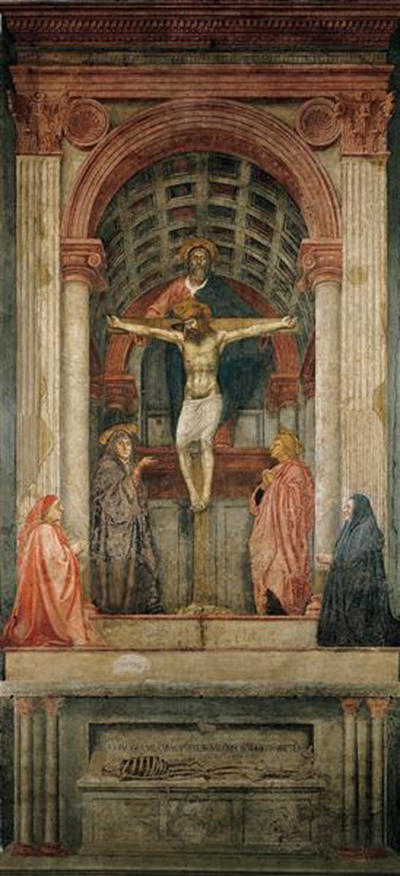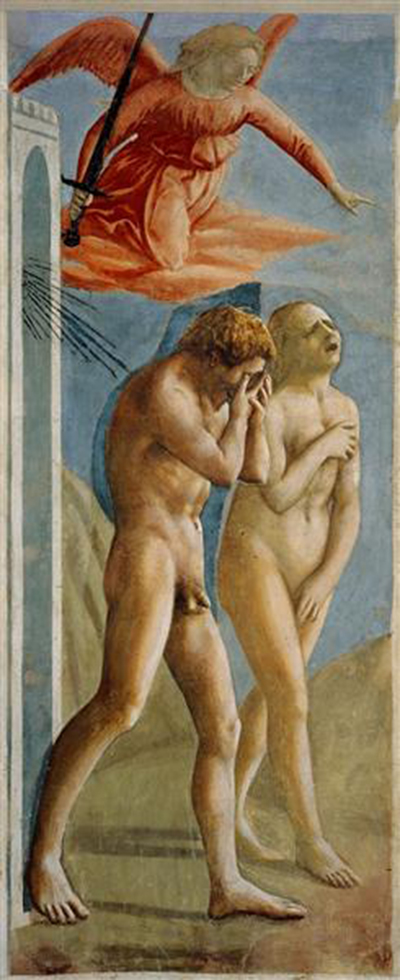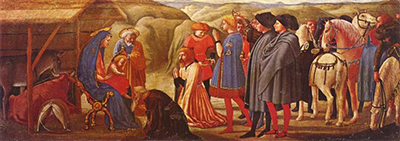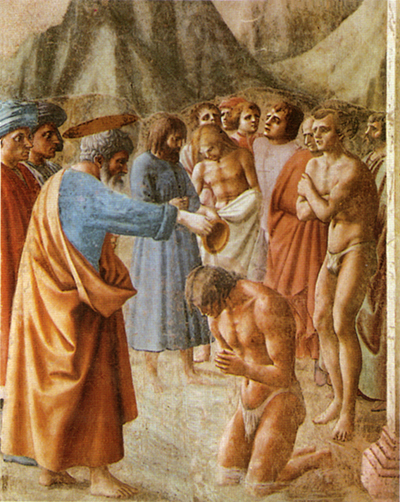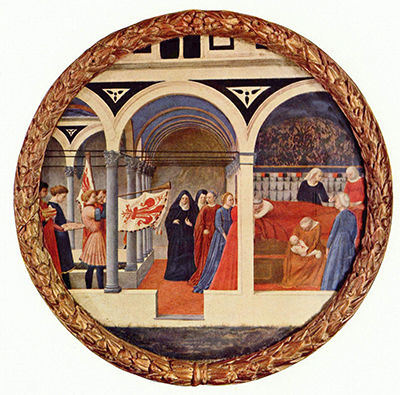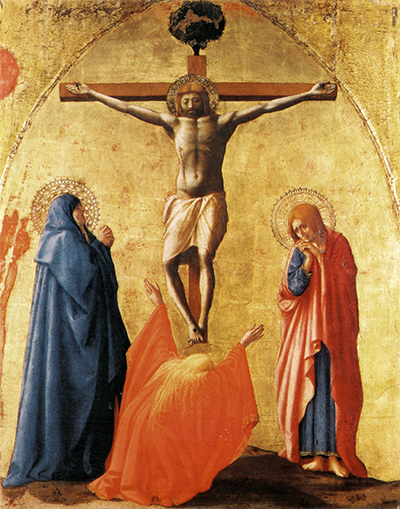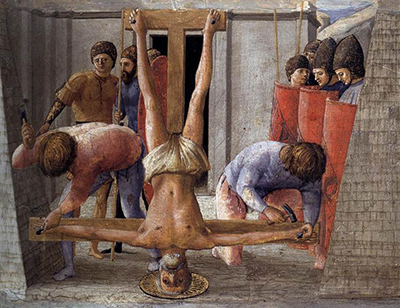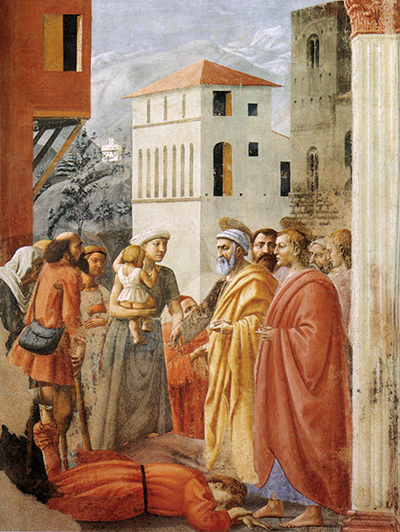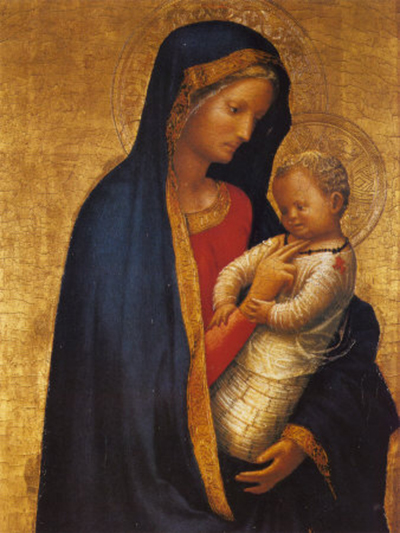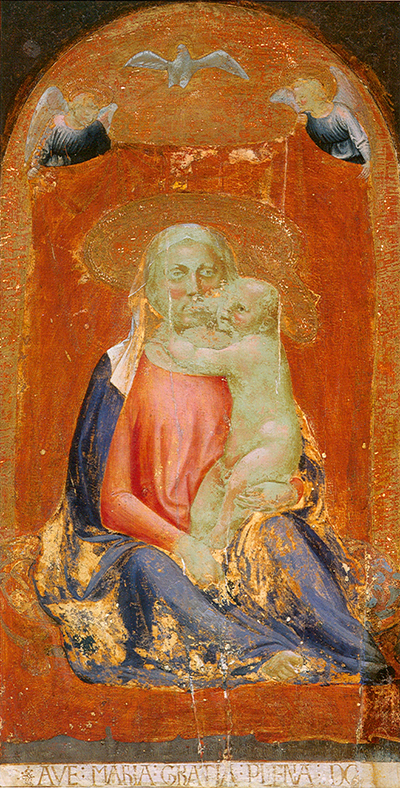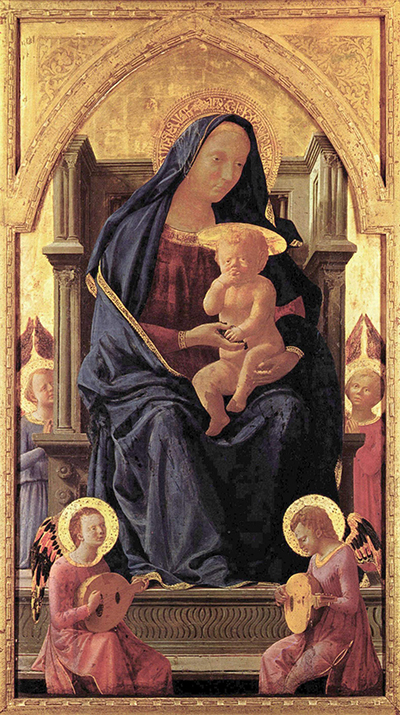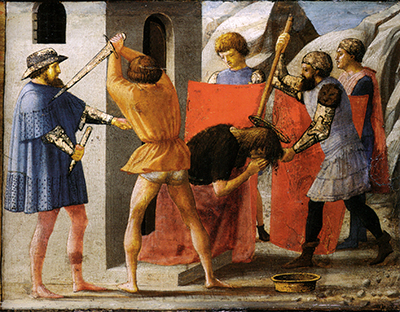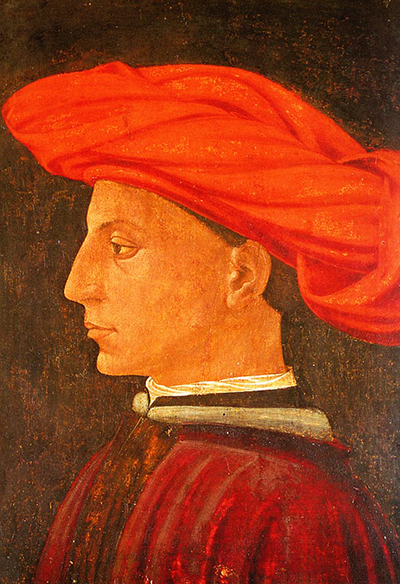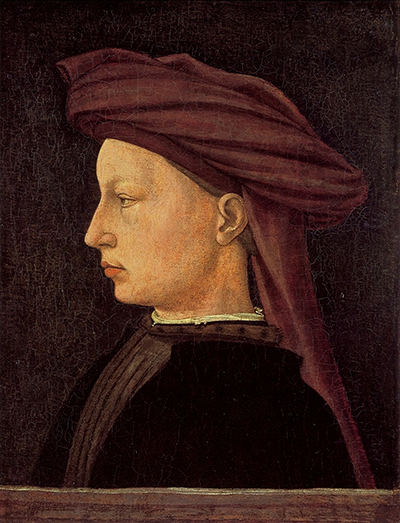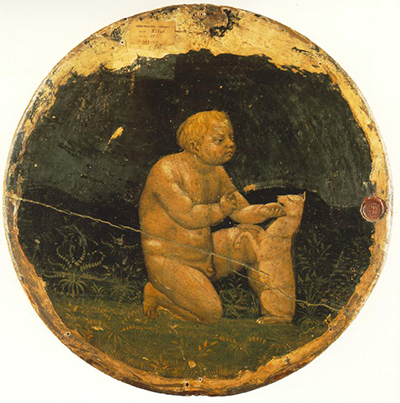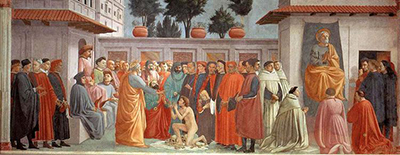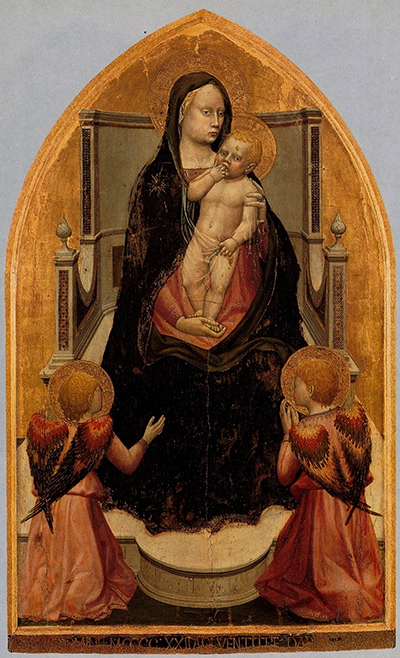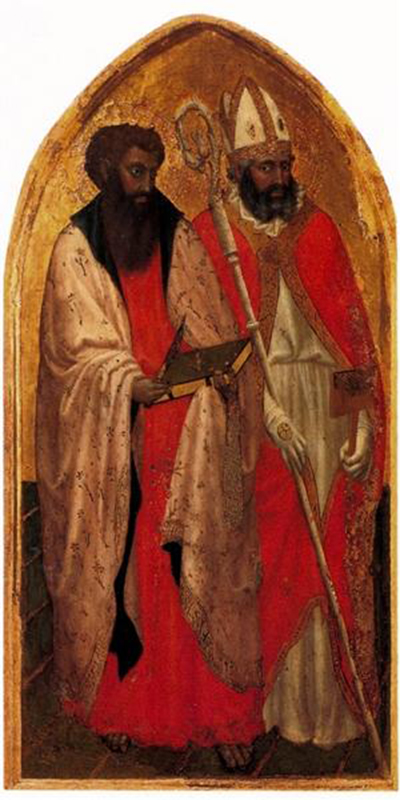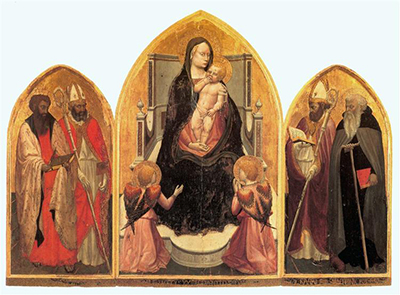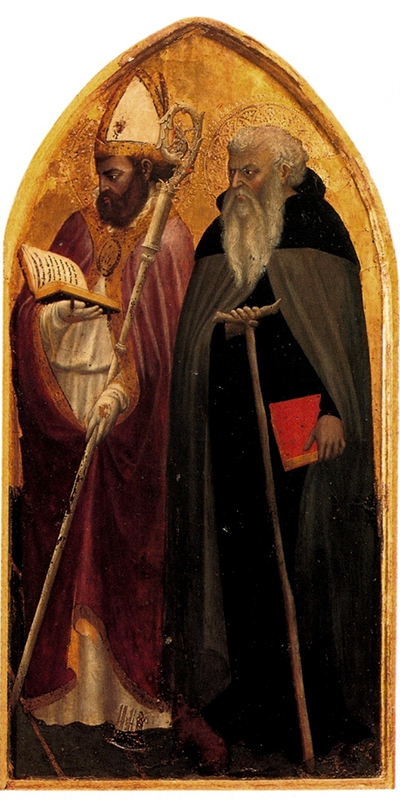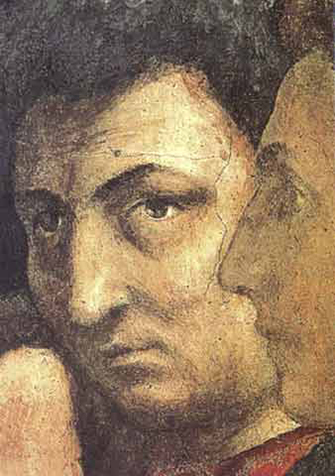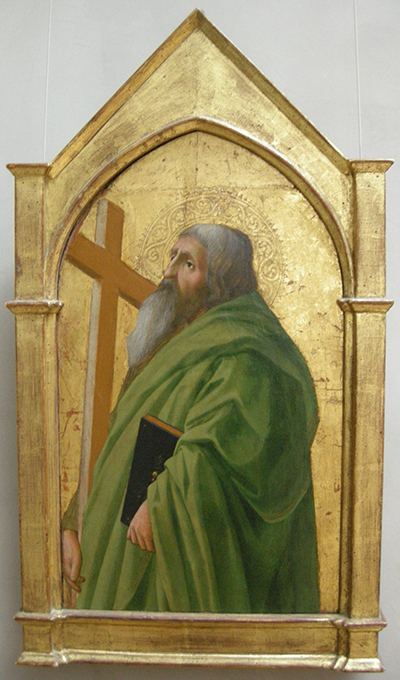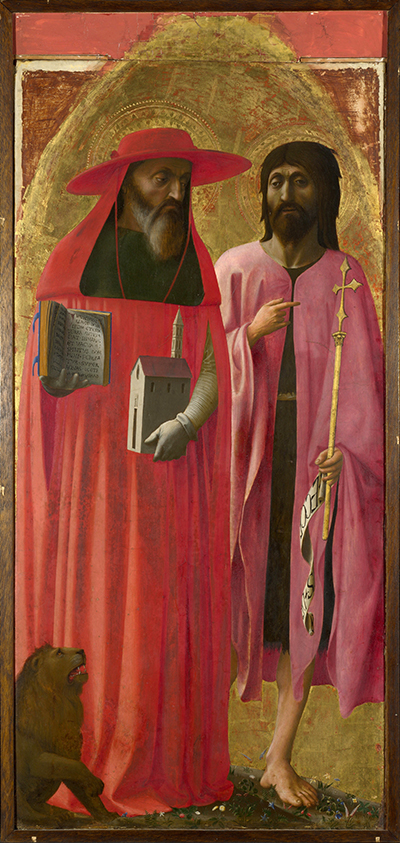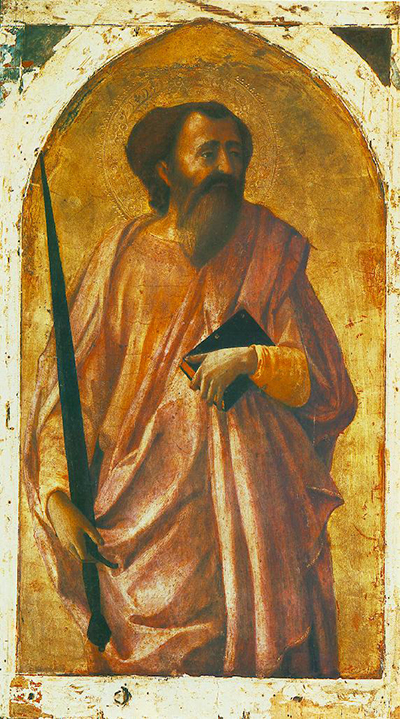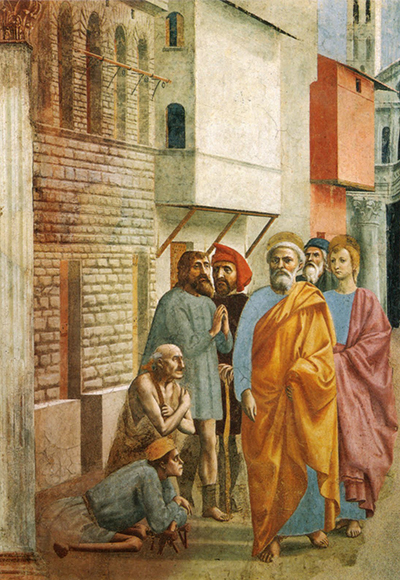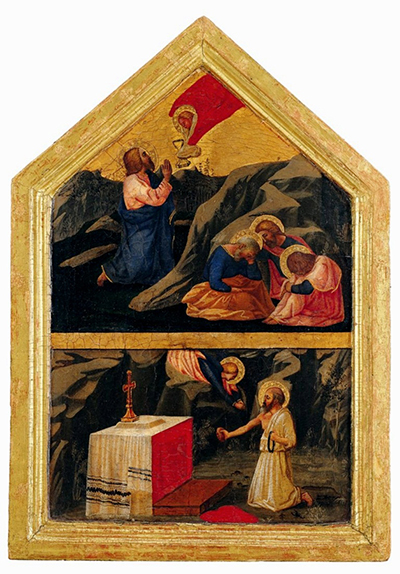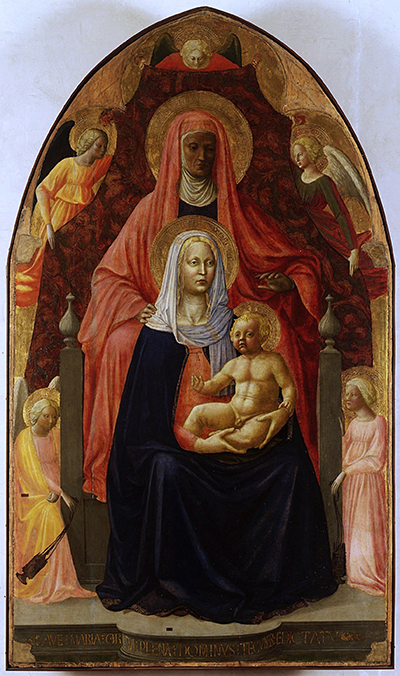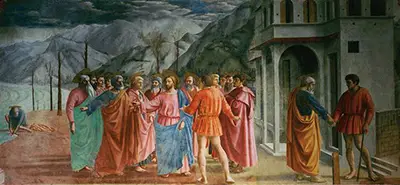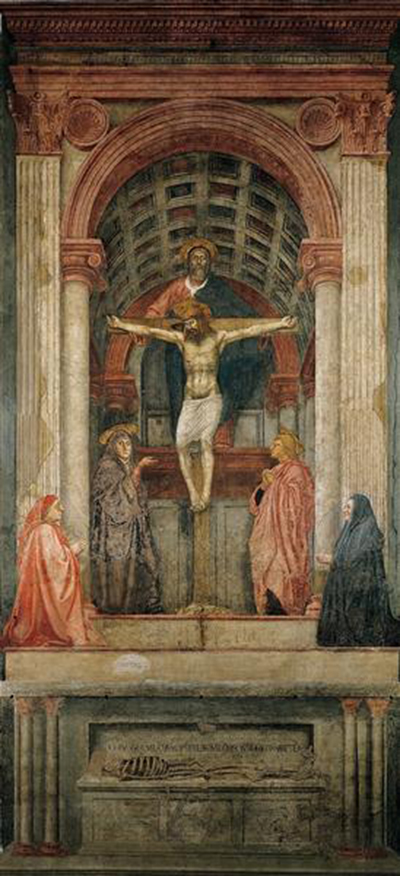As Masaccio is known as the father of the Renaissance Era, his captivating techniques, styles, and themes, gained the artist the famous title.
Masaccio had based his technique in aim of developing spatial perspective. Through this the artist worked to broaden the viewpoint of the painting by either horizontally or vertically expanding the artwork. It is believed that one of Masaccio's last paintings, The Holy Trinity, is one of the true paintings that illustrate his ability to use a view point and expand the work.
Through the use of a viewpoint, The artist was able to elongate the artwork as depth arose through a three-dimensional form. This technique is now one of the cornerstones of art, as all artists use a focal point of viewpoint to base the remainder of their artwork on.
While Masaccio worked to break away from the traditional Gothic styles that seized the Renaissance Era at the time, he often paid tribute to its form throughout his artwork. The artist illustrated grand gothic arches, lineages columns, and incredibly detailed materials throughout his work illustrating the popular style.
However, the artist often worked to display Classicalism throughout his paintings in terms of the style and setting within the work. Masaccio studied different architects, and attempted to mimic their style through small brush stroke illustrating detail. Masaccio was able to find his own style as he commonly intertwined the old and new together as one.
Masaccio had prominently used linear perspectives throughout his artwork to create depth. This involves creating a vanishing point that connects to the focal point of the artwork, yet still manages to seize the viewer's gaze. By achieving this, Masaccio was able to illustrate more depth through his work as figures and structures became three-dimensional.
This technique also allows for the artist to steal the viewer's gaze and place it on and focal point they deem necessary. While the brain believes it's attention is being drawn to the most captivating essence of a work of art, the artist is truly guiding it in order to enhance the theme of the work.
A beautiful example in which many scholars study linear perspective within art is in one of MasaccioÕs paintings titled The Tribute Money. The stunning piece illustrates a horizontal setting of a group of figures in an outdoor setting. Masaccio sets Jesus as the vanishing point within the artwork, reflecting every other figure on his presence.
Through this, Masaccio is able to draw attention to the head of the religion, while still allowing unity to be showcased through the painting as all forms beautifully merge together.
Masaccio held an incredible gift of wind able to illustrate characters throughout his artwork in impeccable detail and form. His realist technique showcased the exact texture of clothing, detail of ones skin, and emotion within ones gaze effortlessly. The artist was able to either add or take away emotion within a painting by simple altering a colour scheme, as he was a master in understanding shades.
Most of Masaccio's artwork illustrates the beautiful relationship in which humanity interacts with the Roman Catholic religion that was popular at the time. The artist illustrates biblical scenes throughout his work, portraits of the holy family, and murals of significant Saints.
This style of art allowed for Masaccio to put classic stories into a visual representation for the society at the time to witness. Through these acts, Masaccio contributed to the structure of civilization as he showcased the beauty of their religion, influencing faith.
Masaccio's captivating style of showcasing religious scenes connected humanity to the Roman Catholic religion.



